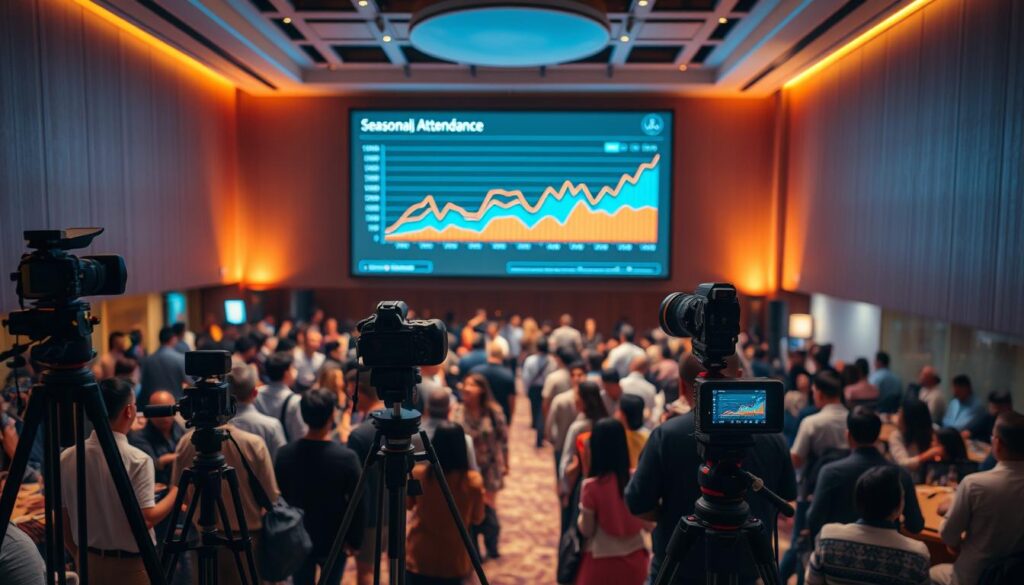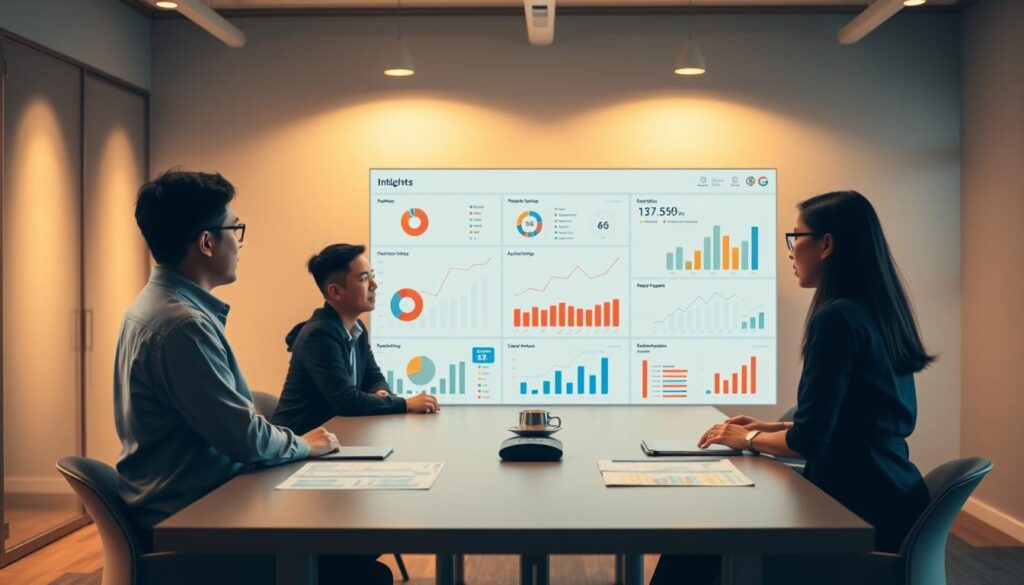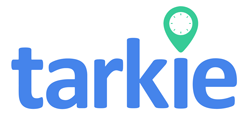Ever thought about how your team’s attendance could change your company’s success? In today’s fast world, seeing attendance data clearly is crucial. It helps make better choices for your business. With new ways to show data, you can understand your team better. This leads to better work and a stronger team spirit.
Small to medium businesses in the Philippines can really benefit from these ideas. For example, flexible work and smart data can cut burnout by 30%. Also, knowing who’s there in real time can lower absences by 15%. Imagine making payroll mistakes a thing of the past. Learning these trends could be your company’s next step up.
Key Takeaways
- Effective visualization can lead to a 50% improvement in decision-making efficiency.
- 30% of companies report fewer absences when utilizing attendance management software.
- 78% drop in payroll mistakes reported by firms implementing comprehensive attendance tracking.
- Real-time dashboards significantly reduce administrative burdens, increasing operational efficiency.
- Utilizing attendance analytics can result in a 25% productivity boost in workforce dynamics.
The Importance of Attendance Data
Attendance data is crucial in today’s workplace. It helps track employee attendance accurately. This is key to spotting trends that affect productivity and morale.
During tough times, like the pandemic, data analysis shows how many people are absent. Understanding this data helps companies improve engagement and use resources better.
Understanding Attendance Data in the Workplace
Companies now use data analysis to better understand employee attendance. By tracking attendance, they can find issues like chronic absenteeism. This affects how much work gets done.
Using modern analytics helps spot areas that need improvement. It gives detailed reports that highlight these issues.
Types of Attendance Data to Track
There are important types of attendance data to watch. Key metrics include:
- Regular attendance logs
- Absenteeism records
- Punctuality metrics
These metrics give insights into how engaged the workforce is. For example, chronic absenteeism can mean bigger problems. It can lead to more employees leaving.
Companies like Jollibee have used attendance data to improve. They show how tracking employee presence is vital.
| Attendance Metric | Description | Importance |
|---|---|---|
| Absenteeism Rate | Percentage of employees missing work | Indicates workforce engagement level |
| Punctuality | Frequency of employees arriving on time | Reflects professionalism and responsibility |
| Attendance Compliance | Adherence to attendance policies | Shows organizational commitment |
Data Visualization Techniques for Attendance Data
Using the right data visualization tools can make attendance data easier to understand. It’s important to pick the right chart types. This choice affects how well the data is shared and understood. Tools offer bar graphs, line charts, pie charts, and heatmaps, each for different data needs.
Chart Types: Choosing the Right Visual Representation
Picking the right chart for attendance data is key for clear communication. Here are some common charts and their uses:
| Chart Type | Description | Uses |
|---|---|---|
| Bar Graph | Displays data using rectangular bars to show comparisons between categories. | Ideal for comparing attendance across different groups or time periods. |
| Line Chart | Shows data points connected by straight lines over a time series. | Effective for tracking attendance trends over time. |
| Pie Chart | Represents data as sections of a circle, showing proportions. | Useful for illustrating the distribution of attendance rates among students. |
| Heatmap | Uses a color gradient to represent data values in a matrix. | Visualizes attendance frequency across different days and time slots. |
Benefits of Interactive Charts
Interactive charts offer many benefits for working with attendance data. They let users dive deep into the data, leading to better understanding. With these features, people can filter, zoom, and get detailed insights.
This engagement boosts data interpretation and helps in making informed decisions. Schools using these tools see better identification of trends and outliers. This is key for making effective interventions.* Interactive charts also make the experience more enjoyable, encouraging more participation from everyone involved.

Identifying Trends with Attendance Visualizations
Looking at attendance data through visualizations gives us important insights. It helps us understand how employees behave and what patterns they follow. By using strong data visualization tools, companies can spot trends and get ready for changes in attendance.
Spotting Patterns in Employee Absenteeism
High rates of absenteeism can mean many things, like employees not feeling connected or health issues. By tracking attendance over time, businesses can find out what’s causing these patterns. This helps them take action early.
For example, companies can see how many workdays are missed. This information can lead to ways to improve attendance and make employees happier. This, in turn, helps the company’s success.
Seasonal Trends Analysis
Seasonal analysis shows how attendance changes at certain times, like holidays or busy seasons. For example, in the Philippines, there’s a big impact on work during Holy Week. Seeing this data helps managers plan better for these times.
This way, they can keep their operations running smoothly, even when it’s busy.

Utilizing Data Visualization for Decision Making
In today’s fast-paced business world, making good decisions depends on data. Visual analytics turn attendance data into useful insights for management. This helps organizations plan better, use resources wisely, and boost performance.
Data-Driven Insights for Management Planning
Data visualization makes complex data simple for management teams. For example, ZylerERP offers real-time reports on attendance trends. This helps managers make smart decisions about staffing and resources.
Visual data helps communicate clearly with stakeholders. It leads to effective strategies based on solid data. Companies use visual analytics to track important performance indicators (KPIs) easily.
Effective Decision Making through Visual Analytics
Advanced analytics tools, like those in Nexus, combine data sources for a clear view. This reveals hidden patterns and insights for better decision making. For instance, AsterDocs shows document data and compliance status, while ConfluxHR tracks employee performance and attendance.
These visual insights improve scheduling and productivity. They show how vital data visualization is for turning complex data into useful insights. As data grows, using visual analytics in decision making becomes even more important.

| Tool | Key Features | Benefits |
|---|---|---|
| ZylerERP | Real-time reports, custom dashboards | Enhances operational efficiency |
| Nexus | Unified data view, advanced analytics | Uncovers hidden insights |
| AsterDocs | Visualizes document data, audit trails | Aids in compliance monitoring |
| ConfluxHR | Employee metrics visualization | Improves workforce management |
data visualization, decision making, attendance data
Turning raw data into useful insights is key for schools to use attendance data well. Showing data in a clear, visual way helps everyone understand it fast. Tools like heatmaps show trends in student absences, and line graphs track test scores over time.
These visuals help managers make better choices by showing patterns and connections clearly.
Transforming Raw Data into Actionable Insights
When schools collect attendance data, they get important metrics for making choices. For example, seeing dropout trends can show how academic performance relates to socio-economic background. This helps schools create plans to keep more students.
Using tools like Tableau and Power BI helps schools put all their data in one place. This makes it easier to analyze attendance and performance together.
Using Visual Storytelling to Communicate Findings
Visual storytelling is key to sharing findings well. Infographics, charts, and dashboards make complex data easy to understand. This way, leaders can share important data like graduation and retention rates clearly.
Using engaging visuals makes data more transparent. It invites feedback and encourages teamwork among staff and the community. For more on using real-time field data, see this: enhancing decision-making with real-time field data.

Tools for Effective Attendance Data Visualization
Understanding attendance data is key for any organization wanting to boost productivity and engagement. The right tools can change how this data is shown and analyzed. Companies can use tools like Microsoft Power BI, Tableau, and Google Data Studio. These tools make it easy to turn raw attendance data into useful insights, helping make better decisions.
Overview of Popular Data Visualization Tools
Data visualization tools turn complex data into easy-to-understand visuals like graphs and charts. For organizations, these visuals are not just pretty but also crucial for spotting patterns and trends. For instance, bar charts are great for comparing attendance across different departments. Line charts, on the other hand, show trends in absenteeism over time.
About 65% of people learn better through visuals. Tools like Tableau offer strong features, including a free trial. This lets users try it out before deciding to buy. Datawrapper makes visualizations accessible to everyone, offering unlimited options for free. This is great for teams of all sizes to work on data analysis without worrying about cost.
Integrating Visual Tools with Attendance Tracking Software
Integration is key to getting the most out of data visualization tools and attendance tracking software. When systems work together smoothly, data flows better, leading to quicker analysis. This means organizations can spot attendance issues fast and act quickly.
These integrated systems help teams make better decisions and streamline work. It’s easier for management to keep up with trends. Plus, teams can make reports that are easy to share, keeping everyone on the same page with attendance metrics.
Enhancing Team Engagement through Visual Feedback
Visual feedback is key to boosting team engagement and building a positive attendance culture. It helps companies share attendance metrics clearly. This way, they can celebrate achievements and encourage accountability among employees.
Using Visuals to Foster Positive Attendance Culture
Visuals are great at reminding teams of their goals and how they’re doing. When attendance data is shown visually, it’s easier for everyone to understand. This makes employees feel more connected to their attendance records.
Simple graphics, like charts showing attendance rates or streaks, can really motivate people. They push employees to do better and be part of a positive attendance culture.
Celebrating Attendance Success with Metrics
It’s important to celebrate attendance successes to boost team spirit. Companies can use visual dashboards to highlight achievements. For example, a leaderboard can show the top teams based on attendance.
By celebrating these wins, employees are inspired to do their best. This creates a workplace where everyone feels valued and motivated.
| Attendance Metric | Frequency | Visual Representation |
|---|---|---|
| Overall Attendance Rate | Monthly | Line Graph |
| Team Attendance Leaderboard | Weekly | Bar Chart |
| Employee Attendance Streak | Daily | Heat Map |
| Absent Days by Department | Monthly | Pie Chart |
| Improvement in Attendance Over Time | Quarterly | Area Chart |
In conclusion, using visual feedback in attendance tracking boosts team engagement and fosters a positive culture. By celebrating attendance successes, companies create an environment where everyone is motivated and accountable.
Best Practices for Presenting Attendance Data
It’s important to show attendance data clearly to stakeholders. This helps them understand and trust the information. Using simple visuals makes it easier for them to get the point quickly.
Adding stories to the data makes it more meaningful. This way, everyone stays interested and gets the message.
Simplifying Data Presentation for Stakeholder Understanding
Being clear is essential when sharing attendance data. Simple charts like bar graphs or pie charts work well. They help people get the idea fast.
Using colors can make the data even clearer. And avoiding complicated terms helps everyone understand it better.
Maintaining Data Accuracy and Integrity
Keeping data accurate is crucial for trust. Companies should use reliable tools to collect data. Regular checks help keep the data right.
Telling stakeholders how the data was gathered builds trust. This way, they know the data is reliable.
| Data Presentation Strategy | Benefit | Example Tools |
|---|---|---|
| Visual Charts | Enhances comprehension at a glance | Tableau, Microsoft Power BI |
| Color Coding | Facilitates quick trend recognition | Google Sheets, Excel |
| Regular Audits | Ensures data accuracy and integrity | Custom Software, Manual Checks |
Conclusion
Data visualization is key in today’s attendance management world. It helps organizations make quick, smart decisions. By using visual tools, companies can spot trends and patterns in attendance.
This approach boosts employee performance and makes workplaces more accountable. With clear attendance data, businesses can use resources wisely. They also meet industry standards better.
In the Philippines, using data visualization tools is becoming more common. It makes decision-making easier and improves workforce performance. This leads to long-term success for businesses.
